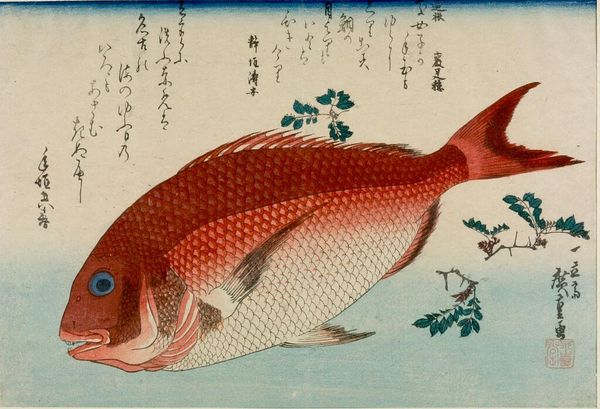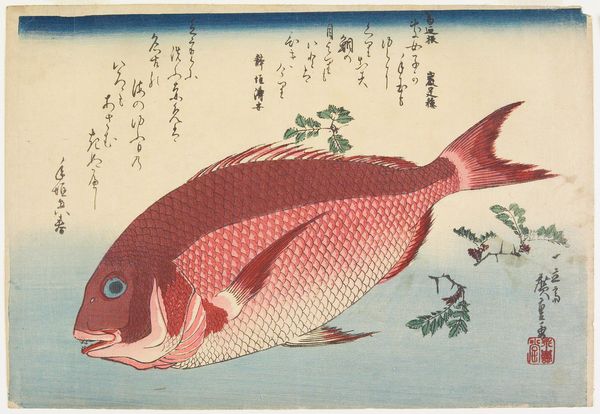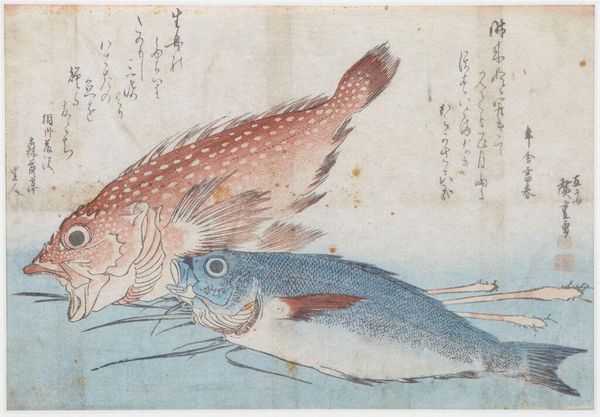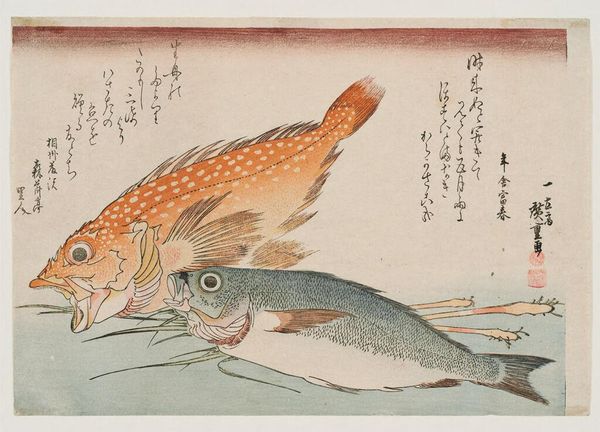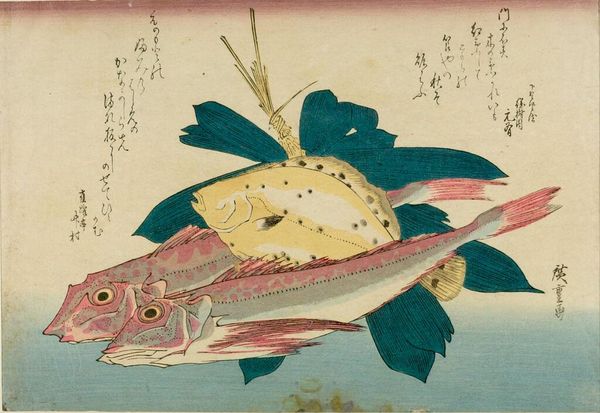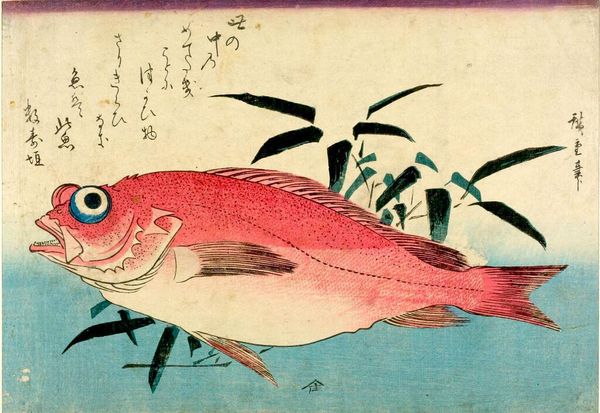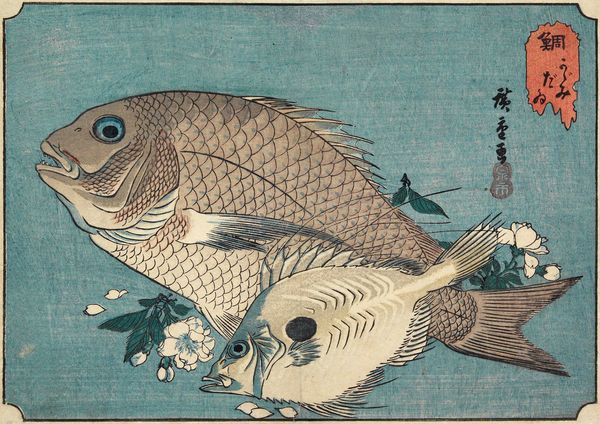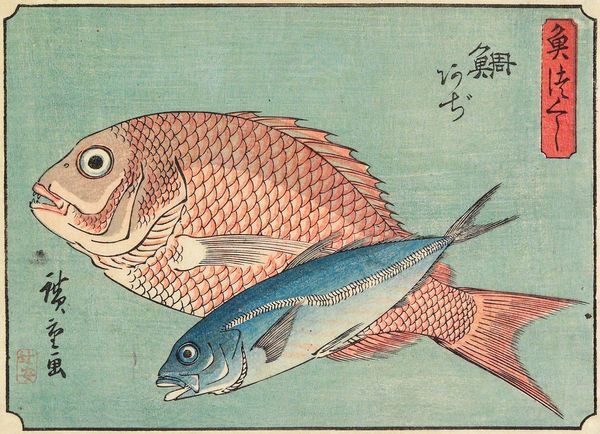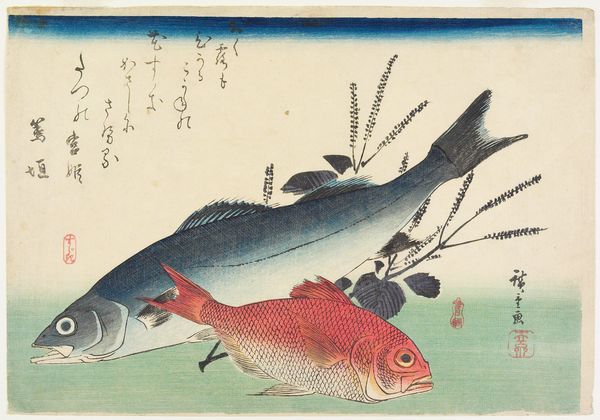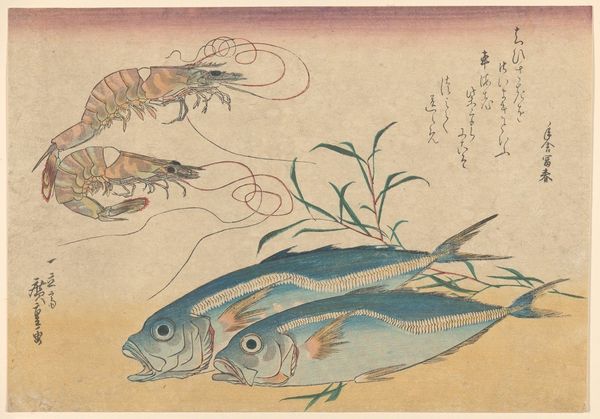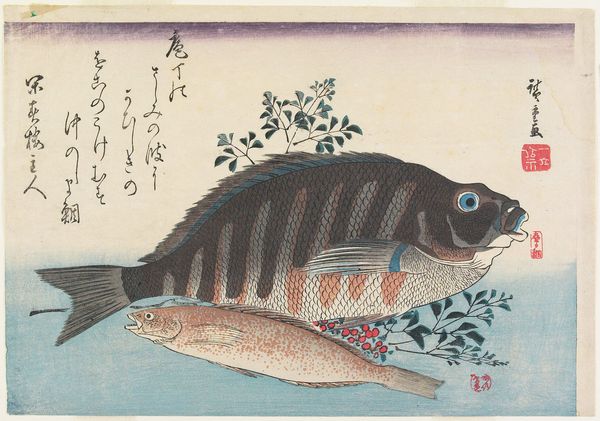
Black Seabream (Kurodai), Small Seabream (Kodai) and Japanese Peppercorns (Sansho), from the series A Shoal of Fishes (Uo-zukushi) c. late 19th century
0:00
0:00
Dimensions: Paper: H. 26.3 cm x W. 38.1 cm (10 3/8 x 15 in.)
Copyright: CC0 1.0
Curator: This is Utagawa Hiroshige's "Black Seabream, Small Seabream and Japanese Peppercorns," from his series "A Shoal of Fishes," housed here at the Harvard Art Museums. Editor: It’s arresting, isn’t it? Starkly composed, yet delicate. The artist really captures the textures of scales and leaves. Curator: Hiroshige’s fish prints highlight the Edo period's burgeoning interest in natural history and consumer culture. The rise of fishmongers and the development of culinary arts informed the art world. Editor: I'm drawn to the power dynamics at play here. The larger fish looms over the two smaller ones, almost predatory, bringing to mind themes of hierarchy and consumption, even survival. Curator: These works were often commissioned by restaurants; Hiroshige's work became a staple in advertising and menu design, reflecting the tastes and trends of the era. Editor: I can appreciate that. But it also prompts a reflection on overfishing and sustainability, ideas that resonate powerfully today, regardless of the piece's original intent. Curator: Indeed. It's a potent reminder of our complex relationship with the natural world, then and now. Editor: A lasting impact, revealing that even still life can serve as commentary.
Comments
No comments
Be the first to comment and join the conversation on the ultimate creative platform.
